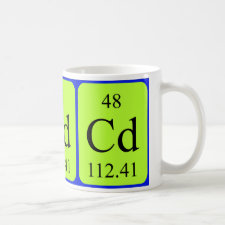
Authors: Zhang N, Hu B
Article Title: Cadmium (II) imprinted 3-mercaptopropyltrimethoxysilane coated stir bar for selective extraction of trace cadmium from environmental water samples followed by inductively coupled plasma mass spectrometry detection.
Publication date: 2012
Journal: Analytica Chimica Acta
Volume: 723
Issue: (1)
Page numbers: 54-60.
DOI: 10.1016/j.aca.2012.02.027
Alternative URL: http://www.sciencedirect.com/science/article/pii/S0003267012003066
Abstract: Cd(II) imprinted 3-mercaptopropyltrimethoxysilane (MPTS)-silica coated stir bar was prepared by solGă˘gel technique combining with a double-imprinting concept for the first time and was employed for stir bar sorptive extraction (SBSE) of trace Cd(II) from water samples followed by inductively coupled plasma mass spectrometry (ICP-MS) detection. A tetramethoxysilane (TMOS) coating was first in situ created on the glass bar surface. Afterward, a sol solution containing MPTS as the functional precursor, ethanol as the solvent and both Cd(II) and surfactant micelles (cetyltrimethylammonium bromide, CTAB) as the template was again coated on the TMOS bar. The structures of the stir bar coating were characterized by FT-IR spectroscopy. Round-bottom vial was used for the extraction of Cd(II) by SBSE to avoid abrasion of stir bar coatings. The factors affecting the extraction of Cd(II) by SBSE such as pH, stirring rate and time, sample/elution volume and interfering ions have been investigated in detail, and the optimized experimental parameters were obtained. Under the optimized conditions, the adsorption capacities of non-imprinted and imprinted coating stir bars were found to be 0.5 μg and 0.8 μg bar-1. The detection limit (3σ) based on three times standard deviations of the method blanks by 7 replicates was 4.40 ng L-1 and the relative standard deviation (RSD) was 3.38% (c = 1 μg L-1, n = 7). The proposed method was successfully applied for the analysis of trace Cd(II) in rain water, East Lake and Yangtze River water. To validate the proposed method, certified reference material of GSBZ 50009-88 environmental water was analyzed and the determined value is in a good agreement with the certified value. The developed method is rapid, selective, sensitive and applicable for the analysis of trace Cd(II) in environmental water samples
Template and target information: cadmium ion, Cd(II)
Author keywords: Stir bar sorptive extraction, Cadmium (II) imprinted 3-mercaptopropyltrimethoxysilane coating, Double-imprinting, SolGă˘gel technique, Environmental water sample, Inductively coupled plasma mass spectrometry



Join the Society for Molecular Imprinting

New items RSS feed
Sign-up for e-mail updates:
Choose between receiving an occasional newsletter or more frequent e-mail alerts.
Click here to go to the sign-up page.
Is your name elemental or peptidic? Enter your name and find out by clicking either of the buttons below!
Other products you may like:
 MIPdatabase
MIPdatabase









